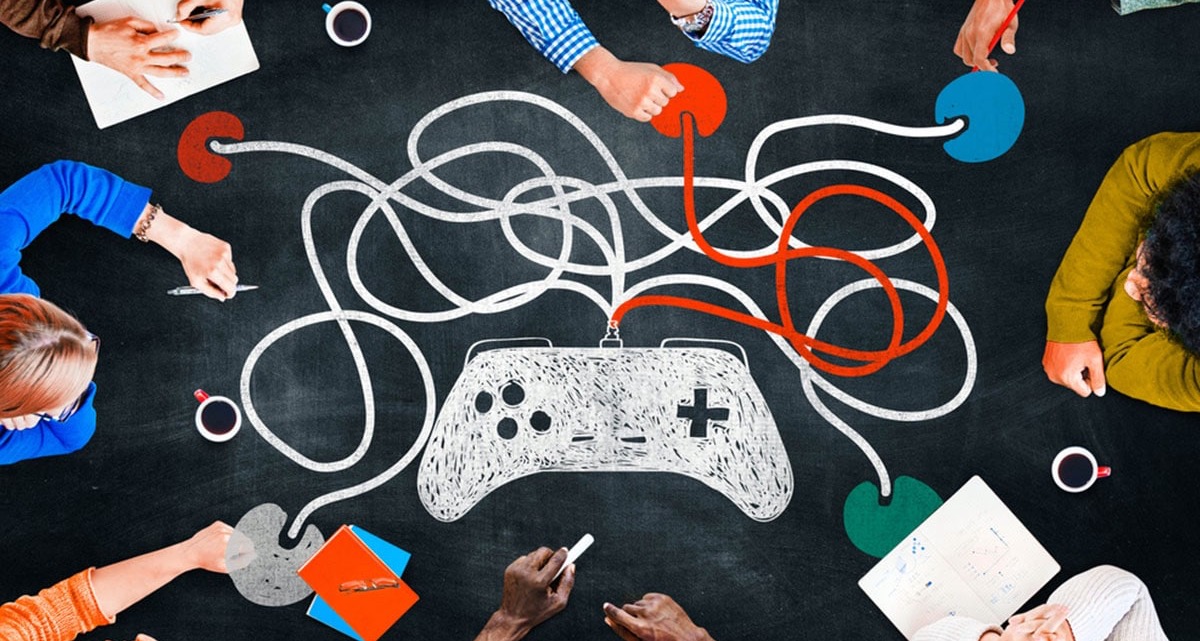
Active Learning techniques are the cornerstone of student engagement and student learning since students learn best when they have goals that must be reached. The more students are engaged in the material, teacher, and class, the higher the levels of critical thinking that occur. Although this strategy may sound like it is part of a game show, game-based learning actually focuses more on teaching than on games.
Through this technique teachers incorporate educational activities into their lessons which work to achieve their learning objectives. These activities can be done independently or with a group, and the game is the assessment. It’s important to keep in mind that game-based learning should be adjustable to fit a variety of learning objectives and/or content areas.
**Technology is not required for this learning technique.
**Technology is not required for this learning technique.
Game-based learning activities often include (but are not limited to):
- Achievable Goals or Learning Objectives
- Rules That Players Must Follow
- Competition & Conflict
- Cooperation
- Feedback from Instructor & Peers
Examples of Game-Based Learning:- Using all or part of a class period, develop games for students to work collaboratively as teammates. Teams are an essential part of game-based learning since it will allow students to give each other real-time feedback. While students are working together, instructors can also survey the room and roam around to see what students are doing and where improvements (another layer of feedback) can be given.
- Classic games, like Jeopardy or Kahoot, allow students to review key course concepts. Consider making a game that uses the concepts in the course while also gaining points. Points will provide students with extrinsic motivation while teams (and being part of the team) will help motivate students intrinsically.
Reading Resources:https://teach.its.uiowa.edu/game-based-learning-higher-educationhttps://mtrj.library.utoronto.ca/index.php/mtrj/article/view/29606/25764Problem-based learning: This approach involves students working on real-world problems or case studies, and applying their knowledge and skills to find solutions.
Project-Based Learning is a teaching method in which individual students learn by actively engaging in real-world and personally meaningful projects. Similarly, Problem-Based Learning is a student-centered approach in which student groups learn about a subject by trying to solve open-ended problems. Students work on a project over an extended period of time, such as a week or possibly an entire semester, in which they are engaged in solving a real-world problem or answering a complex question. They can demonstrate their knowledge and skills by creating a public product or presentation for a real audience. As a result, students develop deep content knowledge as well as critical thinking, collaboration, creativity, and communication skills through practical application of the subject matter.
Project-Based Learning links:
https://www.shsu.edu/centers/project-based-learning/higher-education.htmlhttps://www.pblworks.org/what-is-pblhttps://teaching.cornell.edu/teaching-resources/engaging-students/problem-based-learninghttps://www.hunschool.org/resources/problem-based-learningInquiry-based learning: This approach involves students asking their own questions and conducting research to find answers.
Inquiry based learning emphasizes the student’s role in the learning process.
Self-directed learning: giving students some level of control over what they learn and how they learn it, this can be done through choice of projects, assignments, or readings.